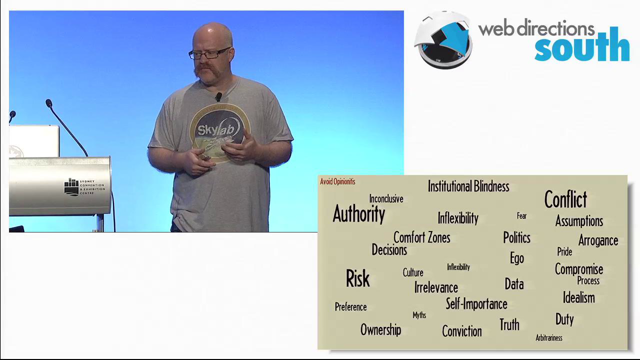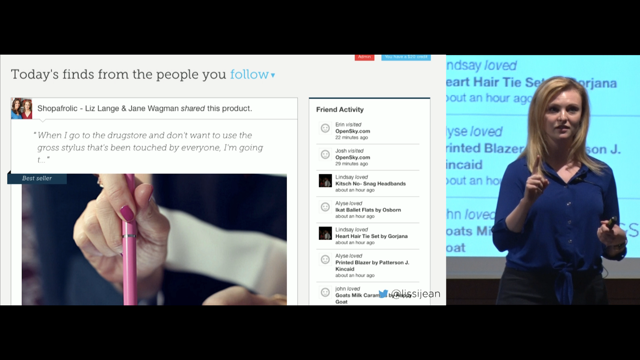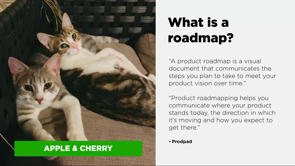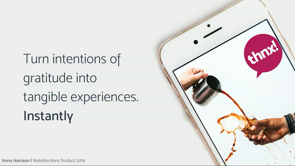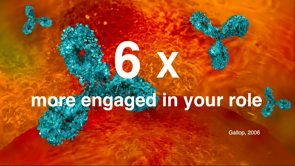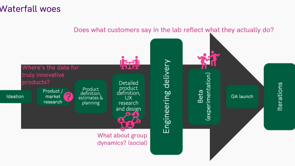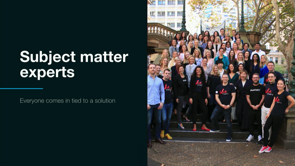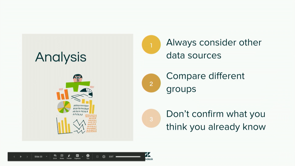The 4 stages of outcome-driven teams

(upbeat music) - It's always hard to follow up such a great introduction.
Like, I had something prepared for you and now I don't know what to say.
Yeah, so, the idea of this talk is really to talk about that journey that companies go through, so as part of my job at Tability we talk to a lot of organisations about goal setting about OKRs, about what it means to be outcome driven. And one common mistake that we see, is companies is going from nothing and trying to jump straight into OKRs.
And so, what we've done, is that we've created this, like simple model that helps with that discussion and shows like how you can have a gradual approach and start by introducing, you know some form of goal setting and then getting a bit more sophisticated over time. But first, I want us to start by talking about, you know what it means to be an outcome driven team. And I have a simple way to describe that.
So, if you think about a task-focused organisation this is kind of like what it will look like. So, you do some activities and that can be like shipping some features like getting some projects done but you don't have the real agenda.
So you do that and then you look at the results. So, you do a bunch of things and you go to your metrics and then you try to see like what moved.
Being an outcome-driven company is a bit about, it's actually about flipping that picture around.
So, you start first by thinking about the results that you want.
Right, so do you want to increase retention? Do you want to get more leads through the door? And then you look at your roadmap you look at the things that you can do with your team and you pick the ones that are most likely to produce those results.
So, it looks kind of like the same but actually, you know, it's a different mindset. And while that picture is really simple you know, to flip things around and practise it actually requires a lot of things to change in all your organisation if you wanna make that happen in an easy way. So, I'm not going to go through the entire table because I kinda like wanna focus more about like, those four stages.
But if I take some of those things if I look at the top.
So, the difference in leadership on both sides. So, in output-focus company, leadership controls and that's because, you know everyone kinda like has been told what to do. So, it's kind of like a binary thing that you need to do. At the leadership level, you just look at if task is done or not, if a project has been shipped or not. And so you just control things.
In the outcome-driven company leadership needs to inspire.
So, rather than telling people what to do you tell them about, you know what's the end result that you're expecting and you trust your team to be able to achieve that themselves.
So your team goes through the journey and what you try to do is to give them more like, a sense of what the North Star is about. And talking about teams, so I looked down these table, so on the left side, when it comes down to the team it's actually quite hard when you're like task focus to not have passive contributors and that's because people they only have like a list of things that they need to do. They come to the office they pick a thing on top of the list and then do the next one and the next one.
If there's nothing, we have to wait for new things to get onto that list.
So people are passive just waiting for the next thing that they need to do.
But the great thing about outcome-driven companies is that people have a better understanding of, you know, what it is that we're trying to achieve as an organisation and so people are empowered and they can take initiatives.
Another thing, I'm talking about roadmaps.
When you're in a output-focused company you don't really have, it doesn't matter if, you know like teams are not sharing the roadmap because everyone is pretty much like doing what they, like doing (mumbles) on journey. But if you wanna be outcome-driven it's really important for you to have like a shared North Star.
I just heard like actually a funny story just before about like a company that displays OKRs in the toilet and that's like what I mean by like, that's a bit pushing the thing a little bit too far, but the idea is there right, it's like you want everyone to know at all times what are the top priorities of the company this is what it means to be outcome-driven. Now, another question, right.
So why do that transformation? Why is it important? You could stay on the left side.
Like I wanna talk about three things really. So, the number one is like.
It's much easier for you to retain talents. People want purpose and they want to feel that there's meaning to the work and that happens when you explain to people why they're doing everything.
It's like, what's the plan? What's the bigger picture here? So being outcome-driven will help you with that. It's also funny, you know, now you know, I don't know, what? I'm quite sure you all follow the news but people start to also disagree with the purpose of the company.
So, you will see this at Google or Facebook but it's really important for you to have a good sense of, you know what you're trying to achieve as a company. What values do you stand for and to communicate that. If you do have remote teams, which is probably happening. So it doesn't matter if it's just one or two person that are sitting far from the team or if your entire team is remote.
It's going to be much easier for you to have like to work as an outcome-driven company.
If you think about someone, you know that is sitting in different time zone and they're just waiting on their teams to wake up because they're not sure what to do.
Well, even NuVet, for instance one of the big focus for the year was to improve ecosystem or improve performance they could pick themselves some types of vacant tech initiatives.
The last one is, we've heard before, you know about like so, at (mumbles), you have a lot of teams. You know, so big companies are splitting into like a lot of small teams that are working together.
And the thing is, it's really hard to coordinate a lot of people if you have to go to each and every team and then leadership has to look at everyone's roadmap to make sure that everything is lined up in the proper way. So, instead of doing that, you want to focus the conversation more on the end results.
So it makes it much easier to coordinate people because you talk about like, where do we want to end as opposed to like, looking at every step of the journey for like 60 or 70 or 100 teams.
So, outcome-driven can help you with those three things. There's many more advantages to that but, you know, there's a reason why OKRs are rising in popularity and a reason why people are looking for better ways to manage execution at scale.
Now, how do we get there? So, have this, this is where we get into the model and we have these four stages that we've outlined and that we talk about with our companies.
So, in stage one, it's kind of like what I talked about at the beginning.
So, you're mostly focused on tasks, right.
So, and this is not a bad thing this is, if you take a startup, like us this is how we started, we kind of like didn't know you know, the market really well what product which we need to build you know, what do our customers want? So you do a bunch of things and you try and you learn and you try to see what happens when you ship your features or talk to people. And it's the same thing in a big company.
So, when I was in Atlassian so we were looking at like a brand new product for us and it's the same thing, so you form a new team and then you're more focused on tasks rather than really having like a clear vision of where you wanna be.
And it's still very much top-down because the team is new and so you kinda like have like, maybe a visionary leader or couple leaders on top but are kind of like setting the tone for the team and saying, this is the things that we're going to build the projects that we're going to work on.
Moving to stage two.
That happens more often than not because of growth. So, the team is growing past the point where micromanagement can scale.
And I say micromanaging and it sounds like a bad word but this is really kind of like what's happening in stage one.
Where you kind of like telling people what to do then you check whether they've done.
And this, you know, there's only like so many people that you can manage like that and so at stage two what happens, is like a team is growing too big and people are not waiting on things to do and so you need to find a better ways to scale and this is when companies are looking into like goal-setting frameworks and looking at better ways for them to like get a sense of, you know, this is a North Star this is what we need to do as a team.
Stage three, for me, that's the most exciting part because this is where you start to have bottom-up. So, the team is knowledgeable enough and know the customers and know the product they know the market they're going after.
And this is one that can start to participate in the definition of the future. And that's stage three, this is when things really truly accelerate because now you're sharing ownership like everyone feels accountable for the success of the company.
While in stage two, you can still say that you know, the boss had the wrong plan.
But in stage three is like, the entire company has decided that this is the direction we wanna take and you see people being more engaged and feeling also more accountable for their results. And stage four for me is the Holy Grail.
You're like at stage three, but you add on top of that fast feedback cycle.
But not on necessarily sprints but more on your strategies. So you're able to like look at the impact about your projects that you're shaping or having on a more regular basis and that allows you to be agile not just in terms of projects but also in terms of strategy. And so what I mean by that like being agile in terms of strategy is having a team that is capable of saying we're gonna kill this project because it's not producing the results that we want as opposed to having a team that is going to obsess over the deadline and ship a project no matter what.
So, stage four companies are companies that have teams that are able to take those decisions themselves.
And just like pitch that to leadership and say, "We think that this thing is not working "and we should probably like stop working on that." Sorry.
So, now, the interesting thing is like.
How do you move from one stage to the other? So, remember stage one, I said to you you know, usually it looks like a company that has a visionary leader and you want to get into the next stage which is like, how do we become outcome-driven? Well, simple answer for me is like don't try to be Steve Jobs, right.
Because, actually, the problem with visionary leaders is that they don't scale and one of the things that I've seen with companies is like there's a paradox, which is that the more successful a company has been at stage one the harder it's going to be for them to move to stage two because what it means is that it's a company that has had like a few people telling people what to do and this has produced like great results.
And so, the sense for people that are on top is that, we need to keep telling people what to do because this is what makes us successful.
But the problem is like, as the team grows there's too many questions that come to you and so you can scale, you become the bottleneck. And so people have to learn one thing which is like, instead of providing answers to the team they need to be able to extract you know, their own concern they need to extract the vision and they need to manage back questions.
They need to tell people those are the things that we want you to explore. Those are the questions that we have.
And they let the team figure it out.
So, the number one thing is obviously extract the vision from the leaders and make sure, and that's not a hard thing to do so a simple vision doc.
You need to have purpose at the top and your purpose is like, what is it? What problem are we trying to solve? And that needs to be true for like three to five years. It's not something that can change every six months. Focus areas, what are we going to do? What do we focus on for the next 12 months? And, what is the definition of success? So if we focus for instance on building a great ecosystem. What does that mean in terms of numbers? And well, success metrics are here to help you measure progress.
So, share vision doc, manage by questions and you start at the top, because obviously, you know you don't wanna shake things too much.
You want first leadership to understand how themselves they can start by functioning with like setting goals instead of giving people tasks and then as you move through the next stages you're going to share some of that a definition of the future with the rest of the team. Now, how do you move from stage two to stage three? Back in the company that I worked previously that is big and that is in Australia.
(audience laughing) We had like a minute, at some point it was like kinda like a whole team was like one of the objectives, you know.
Okay, we're like, delight customers.
So, a simple metric was like every team you need to improve NPS by 30% and so every team is working and working on doing things and one team in the company did one thing.
They changed the way they asked the question. So it used to be that send via email and then one day they just like put that in app and we're like, yep, we stopped in email we put an in app and it pops up and then you get to the question, you answer. And they increased the NPS score by, you know like it blew it up.
And so you're like, well job done.
Well no, because the idea is.
And so the reason why it happened is because if you start asking people in app you stop asking the question to the people that have abandoned your product. So by sending an email, you get a lot of people that don't use the product anymore and so you're more likely to have like bad responses. So that team looked at that and was like, oh well. So we did get to the metric that we wanted but they knew that the job wasn't done, right. So they knew it, because everybody had a good understanding that it wasn't about the metric but it was about delighting customers.
And you didn't do anything to improve the product you just change the way you were asking the question. And so, the lesson learned here is that, when you move from that stage two to stage three focus on alignment first, not the metrics.
And that's a number one mistake that I see companies doing with OKRs is that they spend a lot of time debating key results and thinking that being a goal setting being outcome-driven and embracing goal setting is just about like, pulling a bunch of KPIs and saying, this is going to be the right target. Being outcome-driven, is making sure that everyone understand what outcomes you want, right. And then the metric becomes second because you can be wrong your analytic tools can be wrong you came to your bad targets.
There's many things that can happen like that can be bad with the metrics.
And so a simple way to move to stage three. You can have leadership keeping on setting if you're using OKRs, like a simple thing is like, leadership sets objectives and then ask the team to define the key results themselves. And a way as well to get alignment across your company is to have shared objectives.
So, for instance, you know I'm going to keep using as an example of building an ecosystem. If one of the things like objective is we want to make our ecosystem platform best thing that our customers can see then what does it mean? It means that for your product team they will focus on key results around, you know, shipping great features and having like a great experience for the users and for the third-party developers.
But for your partnership team it can mean finding a lot of partners to launch and so they have different key results but around the same objective.
For your marketing team, it can mean a lot of key results around the launch campaign as well and the result of a launch campaign.
And so you share some objective and as a leadership team or as a company, it's easy to go to anything and say hey, what are you doing for the ecosystem objective? And then people can talk about how they're going to be successful.
Another thing that is really important.
It's okay to be KO.
So, you need to create a culture where people are not trying to play hero, right. Like you want people to report bad news early instead of obsessing about like, if they have a bad result to panic and to try to fix it and then they get to you at the end of a quarter and they're like, "Well, I did everything I could "but this is wrong." So the people need to feel comfortable reporting bad news and saying, "They, this doesn't seem to be working." And one of the many reasons for that is to get back to that example of the NPS.
It's actually really hard to pick the right metric. Like we're human, we're bad at predictions. So, in the first year, you're going to do OKRs and even in the second and the third one.
You're gonna make mistakes from the key results that you pick.
So, when people are starting to share progress about those key results it's important for them to be able to say early. "Hey, we're off track." And then you can have like a meaningful discussion as a group and try to understand what's happening.
And more often than not is not that some people are doing bad job it might be because you picked a key result that actually you can really have an impact on or it can be that you picked a bad target it can be many thing before it is like a problem of the team's.
Keep your goal smart.
So this is more about the smart framework, so look into it and make sure that you're, all the people in your company are familiar with that way of writing goals because it's a way to help make sure that, you know, when you write a goal it's meaningful so it stands for specific, measurable attainable, relevant and time-bound.
And the time-bound piece for me is like the most important that sometimes people forget. If I'm asked to get 100 customers in a week it's not the same thing as getting 100 customers in a month.
And this is what I have to say about moving from stage two to stage three. Now moving to stage four, who knows what that is? This is called monster chess.
And monster chess is a variant of chess where blacks have all the pieces and white, they only have that.
But, black, for each move black can move like normally you know, it's like one move at a time.
But for one move a black makes, white can move twice, right. So I can move one time and then another time. How many of you think that black are going to win most of the time? And how many of you think that whites are going to win most of the time? Yes, so this is actually a game where it's actually really hard for black to win. To blacks to win and that's because.
As soon as white can get a queen by getting to the top of the board they pretty much have won the game.
Because then they can just obliterate like the rest of the pieces.
And the idea here that is important is that execution beat strategy.
Even if you start in a bad position if you can get feedback faster and this is kind of like what's happening in this game. It's like, you move once and then I can do two things for every move that you make. If you can execute faster you can often recover from a bad position and this is the idea of like moving from stage three to stage four.
So you wanna have fast feedback cycles because you wanna spend less time basically, trying to come up with a perfect plan. If you give me two teams are equally smart but one team is like trying to make sure that they have all the answers before they start moving and that really is a bit till you talk about like, you know, if you try to complete everything and do that waterfall planning before you start trying to get answers and you give me another team that is capable after a week to say, you know what those are the question marks that we have and we'll just move forward and we try to fill in the blanks.
I can guarantee you that the second team is going to win. And it's because, first of all even if the first team like figures out like all the answers to their questions.
Like some of those answers are going to be wrong. And the market is moving, the technology is moving and so the more time you spend like discussing what you should do the more actually the things that, you know you looked at to begin with has changed.
So, to move from stage three to stage four you start and need to go from mechanics of maybe you know, reviewing progress on your OKRs or, you know, your goals, once a month to doing that like on a weekly basis.
And to do that, something that is a very practical change that needs to happen is that you need to keep the cost of feedback really low. And what I mean by that is like how many clicks does it take people to find the OKRs or how many clicks does it take people to update things ensure progress and report that back to the stakeholders. The more friction varies, the less people are going to do it you're going to end up with a plan that you design you know, it's like you start the quarter you spend a week in the workshop you put a plan in the page and then that gets forgotten. And so you can't afford to have that.
So you need to make sure that reporting feedback and checking, you know, the goals and the top priorities of the company but this is super easy to do.
Which goes back to having your OKRs in the toilet. But so, another thing that is important.
Moving to agile roadmaps, what I mean by that. This is something that is hard like for the bigger the company is because you kinda like have to coordinate a lot of people, but to me what I call a (mumbles), is instead of having a lot of, you know, everything is like you have deadlines for all the things that you need for the next 12 months, you actually think more into you know, this is what we're doing now this is what we're doing next this is what we're doing later.
And the idea is to remove, you know for emphasis on deadlines so that you can focus more on like the discussion. Is this the right thing to get us this impact. And obviously, you know, after with internal teams you'll have to do some coordination.
But, you know, the more you think in terms of, you know, you use like agile roadmaps the easier it is for your teams to think about moving projects around or changing priorities as well. And the idea of stage four is really to get to this thing where you both you know, check, you know, how you're doing on your projects you know, every sprint, but you're also looking at how you're doing on strategy as well.
And that's it.
So, thank you for listening to this talk.
Actually if you're interested in this and you wanna see like a more expansive version of this talk and how you can go through the stages.
You just go to tability.io/okrs And we've outlined the same thing like but in a written way. Thank you.
(upbeat music)
